When preparing my write-up on the 6mm-284 for
Handloader No. 336 (February – March 2022), a photo lineup of 10 cartridges on the .284 Winchester case was included. They ranged from the 6mm-284 to the .375-284. I had long assumed that .375 inch was about the maximum bullet diameter the .284 case could handle, but was proven wrong. Shortly after the column was published, I received a message from Chris Moen of Havre, Montana, who has been hunting with a custom rifle in .411-284 since 2019. He also offered to send formed cases and dummy rounds. The first thought that came to mind after receiving them was a modern version of the .400 Whelen. My second thought was to feature the .411-284 in this column and the decision to do so was made immediately after Chris graciously offered to share his load data and accuracy information.
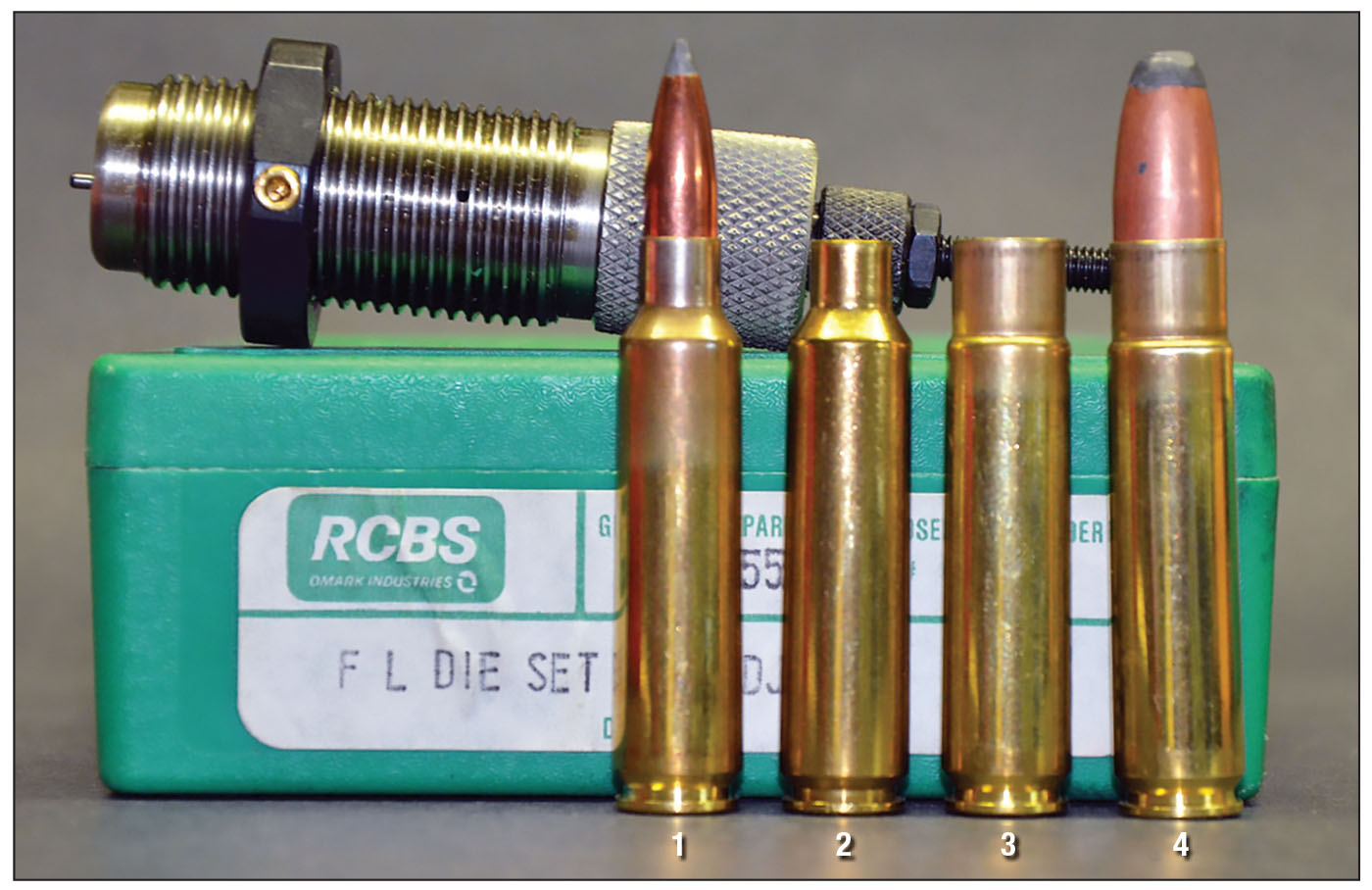
Neck diameter of the .284 Winchester case can be increased by using tapered expanders available from RCBS or by fireforming: (1) .284 Winchester cartridge, (2) .384 Winchester case, (3) .284 case fireformed and full-length resized for .411-inch bullets and (4) .411-284 cartridge.
Before taking a close look at the .411-284, I will mention that many black-powder cartridges of the past used .40-caliber bullets ranging in diameter from .401 to .412 inch. To name but a few among a couple dozen or so, .38-40 Winchester, .40-50 Sharps, .40-60 Marlin, .40-65 Ballard, .40-70 Sharps and .40-110 Winchester Express. The .405 Winchester introduced by Winchester in the 1895 lever-action rifle in 1904 may have been the first to be loaded with smokeless powder. A .412-inch bullet weighing 300 grains exited the barrel of the Model 1895 at a velocity of 2,260 feet per second (fps).
There have been others. In his book Wildcat Cartridges (1947) Richard F. Simmons wrote about Charles Newton developing the .400 Newton but chambering only four of his rifles for the cartridge. Muzzle velocity with the Winchester 300-grain bullet was said to be 3,042 fps. There were also several wildcats. The .400 Niedner developed by Adolph Niedner who made many of the barrels used by Griffin & Howe for building custom rifles, was quite similar to the Newton design and produced about the same velocity with the Winchester bullet. A maximum charge of HiVel No. 2 powder (long ago obsolete), pushed a 300-grain bullet from Vernor Gipson’s .400 Gipson at 2,700 fps. P.O. Ackley’s .40-348 was on the .348 Winchester case.
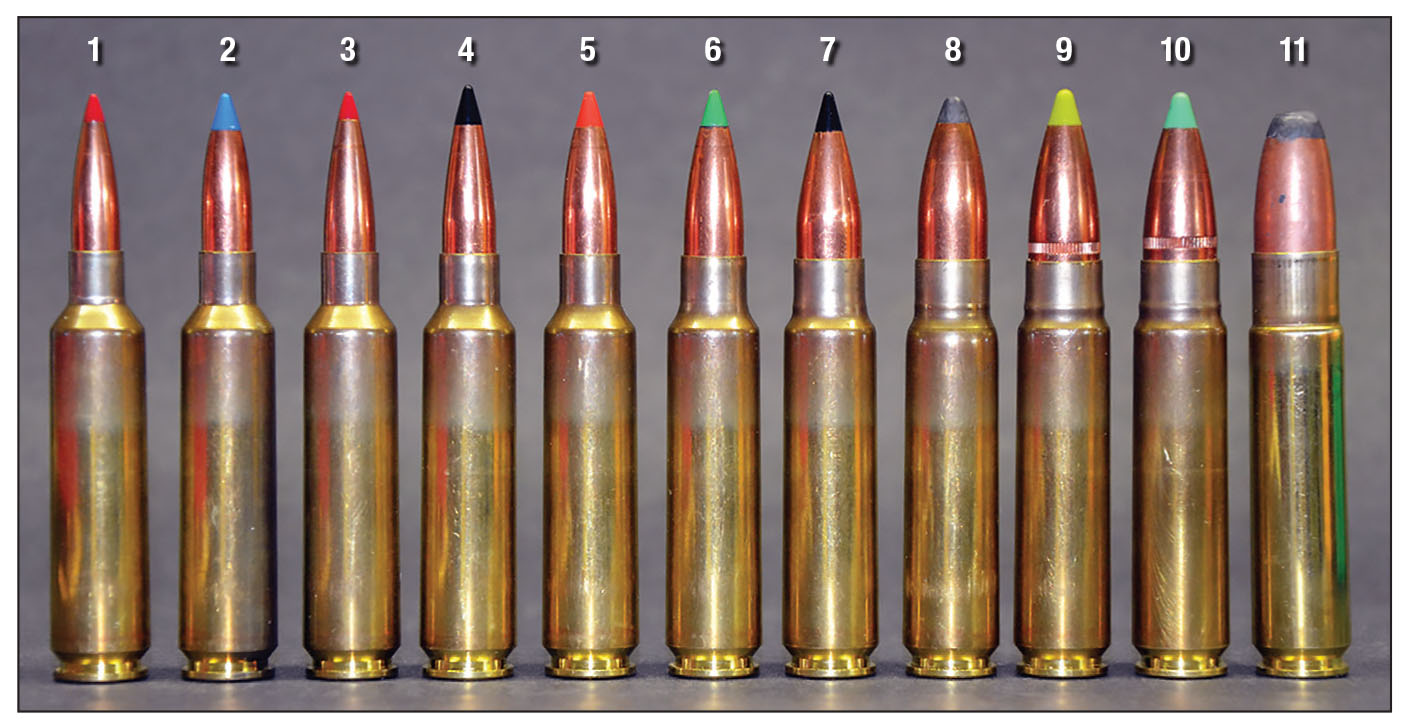
Since its introduction in 1963, the .284 Winchester has been necked up and down to various calibers with the .411-284 probably being the largest diameter bullet it will handle while still having enough shoulder area for trouble-free headspacing: (1) 6mm-284, (2) .25-284, (3) 6.5-284, (4) .27-284, (5) .284 Winchester, (6) .30-284, (7) .33-284, (8) .35-284, (9) 9.3-284, (10) .375-284 and (11) .411-284.
Better known and longer lasting than those is the .400 Whelen which also used the Winchester 300-grain bullet. To quote Townsend Whelen from his book
The Hunting Rifle, published during the early 1940s; “In 1922 Mr. James V. Howe and the writer developed the .400 Whelen cartridge. This cartridge was constructed by taking the .30-06 case before it had been necked at all and necking it down to .40 caliber.” At the time, Whelen and Howe worked at Frankford Arsenal where .30-06 cases were made and that gave them easy access to cases while they were in a cylindrical stage. When necked down, the diameter at the body/shoulder juncture of the case measured .458 inch and while shoulder surface area was quite small, it proved to be sufficient for reliable headspacing.
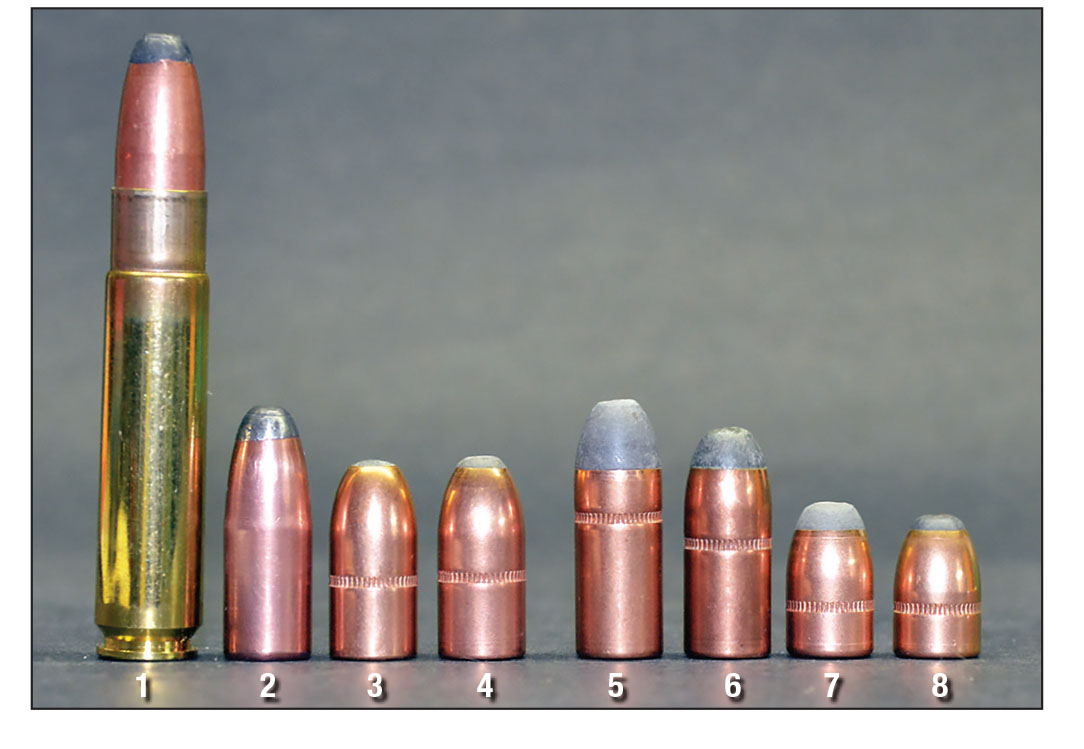
Chris Moen, the creator of the .411-284, developed load data for Hawk’s 350-grain bullet as well as the bonded and non-bonded versions of the 300-grain bullet made by William Noody of Northern Precision. The other bullets were included in this photo to illustrate other weights offered by Northern Precision: (1) .411-284 cartridge, (2) 350-grain Hawk, (3) 300-grain NP non-bonded, (4) 300-grain NP bonded, (5) 400-grain NP, (6) 350-grain NP, (7) 225-grain NP and (8) 200-grain NP.
Rifles in .400 Whelen built by Griffin & Howe on the 1903 Springfield action were chambered to the exact dimensions drawn up by Whelen and Howe. If the latter name sounds familiar, Howe later teamed up with Seymour Griffin to form Griffin & Howe. The cylindrical cases used to form the .400 Whelen case were never available to private-sector citizens so in their absence, .30-06 brass was necked up instead. Due to the smaller .441-inch diameter at the body/shoulder juncture of that case, .400 Whelen cases formed in that manner resulted in a reduction in shoulder area. According to Michael Petrov, who was an authority on the .400 Whelen cartridge as well as custom rifles chambered for it by Griffin & Howe, that’s why the .400 Whelen got the bad rap of headspacing issues. Cylindrical cases with the .400 Whelen headstamp are now available from Quality Cartridge but that does not solve the problem for owners of rifles chambered for the .30-06 case necked up and reloading dies made accordingly.
I detoured along that trail in order to point out that the .284 Winchester case is larger in diameter than the .30-06 case and when necked up for .411-inch bullets, remaining shoulder surface area is even greater than on Whelen’s necked-down cylindrical case.
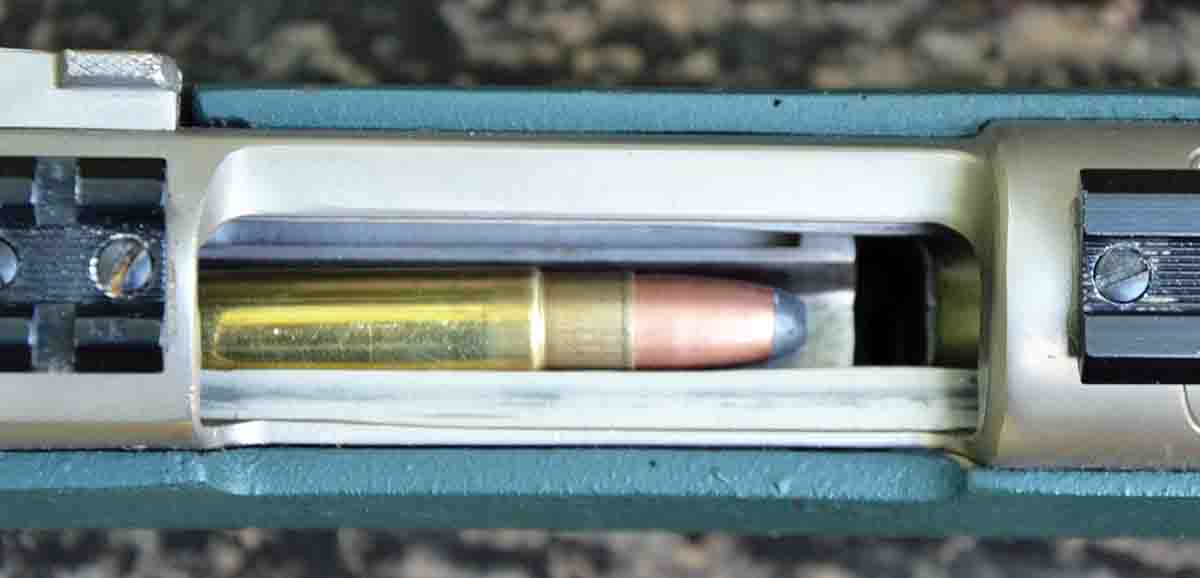
For obvious reasons, the .411-284 will not enter the .338-06 chamber of Layne’s custom rifle on the Mauser 1898 action, but the cartridge feeds smoothly from its magazine.
Chris Moen became interested in .411-inch bullets while shooting a custom rifle chambered for the .405 Winchester cartridge and that proved to be so interesting, I could not resist including details on his rifle and the load he shoots. The action is an 1874 Remington Rolling Block made by the Swedish firm, Husqvarna and it had been converted to fire the 8x57R, a German-developed cartridge, which was much like the British .360 Nitro Express No. 2. Phil Schreiber of Eureka, Montana, installed a 32-inch, No. 6 contour barrel made by McGowen barrels of Kalispell, Montana, and chambered it for the .405 Winchester. He also bushed the breechblock for a firing pin of smaller diameter and fitted a new forearm. The rifle wears a mid-range tang sight made by Lee Shaver.
The 420-grain, .395-inch bullets are cast in moulds made by Phil Schreiber and Steve Brooks. Two wraps of paper increases the diameter to .412 inch. His cases were made by Winchester long before many who read this were born and Winchester WLR primers are used. Cases are charged with 3 grains of Unique followed by 52.5 grains of Olde Eynsford black powder. Then comes a dental wax over-powder wad followed by a .40-inch wad cut from a milk carton. It is followed by a .125-inch felt wad filled with White Label lube. After being lightly coated with the same lube, a paper-patched bullet is seated to a cartridge length of 3.380 inches. Average muzzle velocity is 1,320 fps. Chris shoots the load during weekly matches with friends with accuracy averaging 2 minutes of angle out to 500 meters where it topples steel rams with authority. When hunting with the rifle, he limits shots to 150 yards. The pure lead bullet expands nicely on game and penetrates a deer from stem to stern.
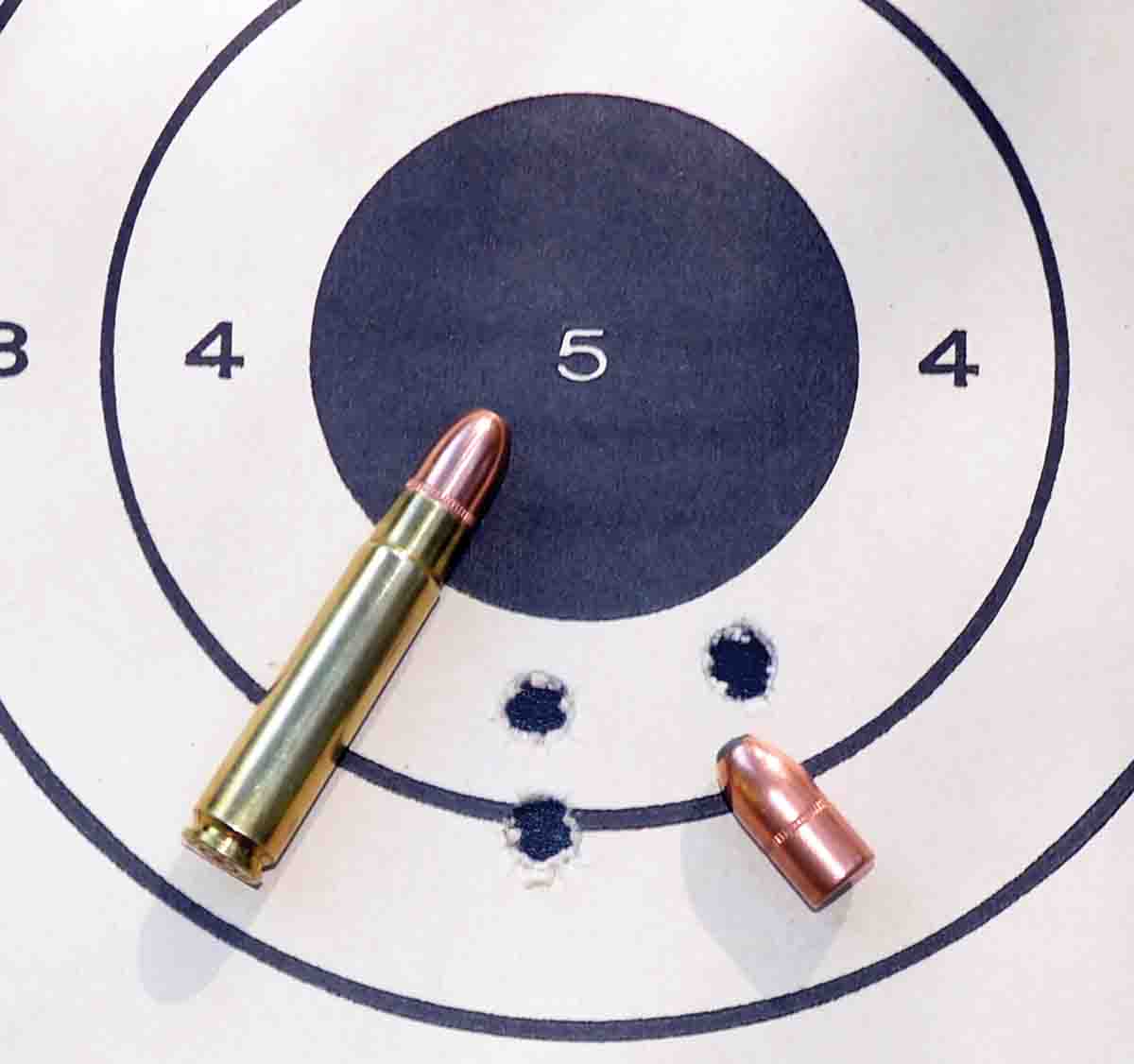
This group fired at 200 meters with the Northern Precision 300-grain bullet pushed to 2,350 fps by 53 grains of Benchmark measured 1.41 inches.
Getting back on track with the .411-284, rather than using a series of tapered expanders to neck-up .284 Winchester brass, Moen charges primed virgin cases with 12 grains of Unique followed by a corn meal filler and capped off with a layer of dental wax. Cornmeal can be a bit abrasive, so to prevent wear in the bore of his rifle, he machined a section of drill rod to the same exterior dimensions as the 3-inch, 12-gauge shotshell (including its rim). It was then bored .400 inch and chambered with a .411-284 Reamer. Placing a charged case in the “fireforming chamber” and loading it into the chamber of a single-barrel, break-action shotgun and firing it produces a .284 Winchester case with its neck expanded for the larger bullet. A trip through a full-length resizing die readies the case for loading. Another option is to use cases with the proper headstamp from Quality Cartridge.
Moen built his rifle around a 1910 Mexican Mauser action. The six-groove, McGowen barrel is 22-inches long and it has a 1:14 twist. The Ramline stock was reinforced with fiberglass and a steel crossbolt behind the recoil lug. Like me, he likes old stuff and the scope is a 1960s vintage Weaver K4 with a post and crosshair reticle. Test groups are usually shot at 100 meters from a sandbag rest with occasional groups fired at greater distances. One of the targets I received had a three-shot group fired at 200 meters (218.8 yards) with the 300-grain Northern Precision bullet and it measured just 1.41 inches.
It might be of interest to mention that I checked to see how .411-284 cartridges would feed in my Mauser in .338-06 and while for obvious reasons they would not enter the chamber, every cartridge slipped from the magazine without a hitch. A switch-barrel rifle built many years ago by Butch Searcy, its other barrel is in .270 Winchester. A third barrel in .411-284 would make the rifle capable of handling everything from pronghorn in open country to moose and elk at reasonable distances to brown bear in the dense alder thickets of Alaska.
Chris reported that the Hawk 350-grain bullet with a jacket thickness of .035 inch is quite deadly on game and while he has not had an opportunity to use the Northern Precision 300-grain bullet in the field, he described it as “scary accurate” from his rifle. While on the subject, I will mention that William Noody at Northern Precision is doing his best at keeping Winchester 1895 rifles in .405 Winchester as well as other cartridges using bullets of .412-inch diameter active in the field. Optional weights are 200, 225, 300, 350, 375 and 400 grains, all available with bonded or non-bonded lead cores.
Respective maximum velocities for the .411-284 with 300-grain and 350-grain bullets are in the neighorhood of 2,350 and 2,200 fps. In his book Complete Guide to Handloading, (1937) Philip Sharpe mentioned 50,000 psi as the maximum pressure recommended by Whelen for his cartridge. Sharpe’s highest velocities at that pressure level were 2,350 fps for the Winchester 300-grain bullet and 2,215 fps for a 350-grain bullet of unspecified make. Like I said back at the beginning, the .411-284 is accurately described as a modern version of the .400 Whelen.
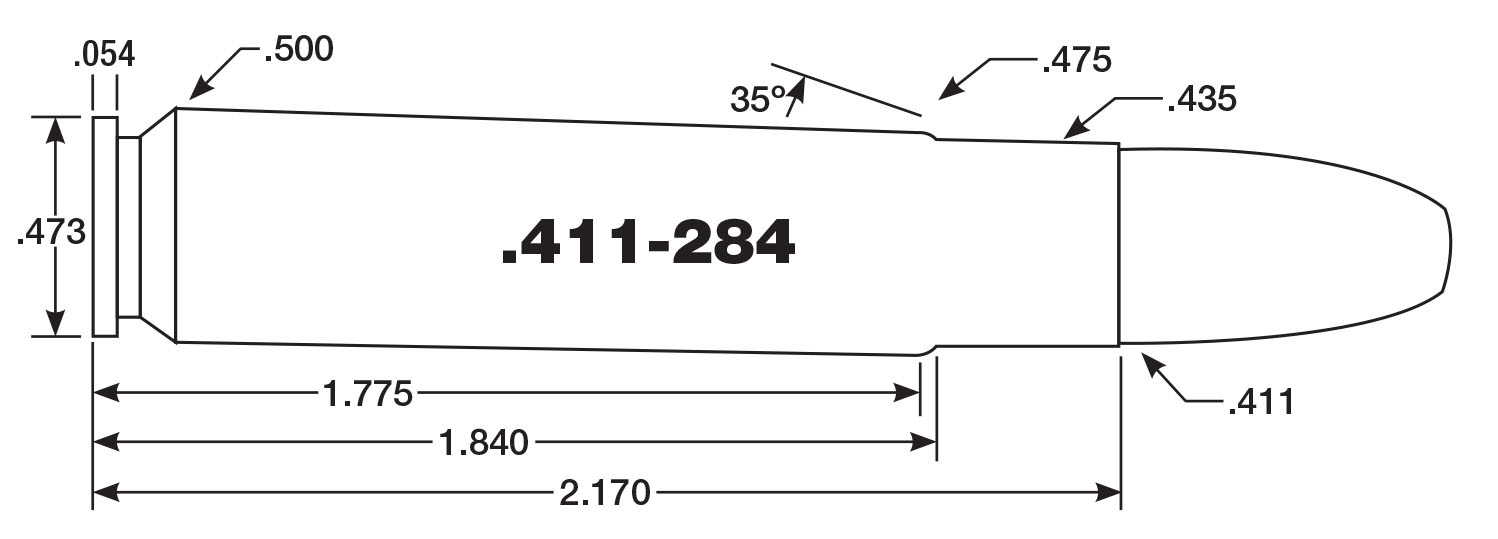





.jpg)


